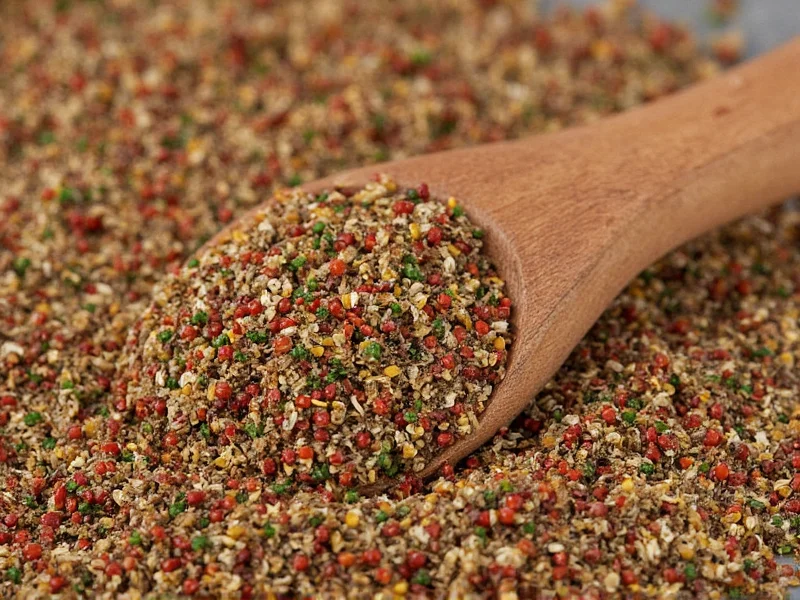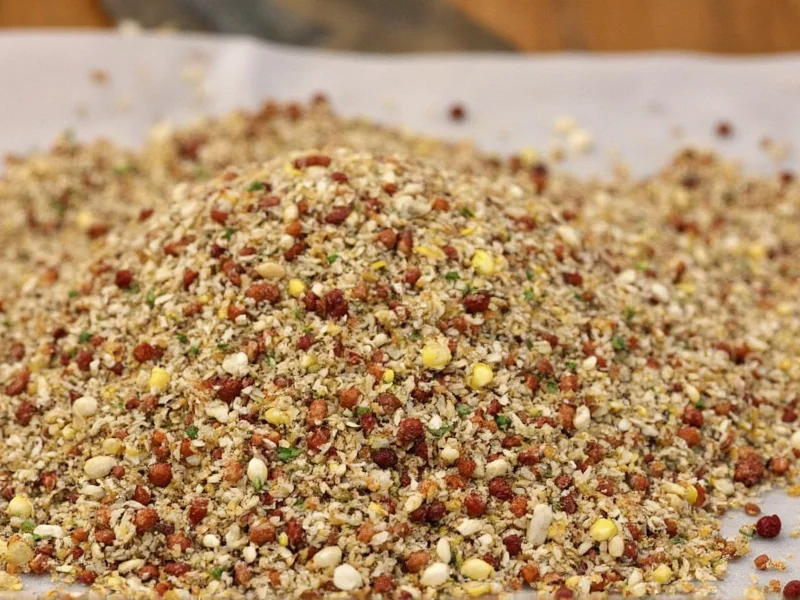Ever searched for "za atar" only to find confusing results? You're not alone. This common misspelling masks a culinary treasure with deep roots in Middle Eastern culture. Many mistake za'atar for a single herb or buy blends lacking its essential ingredient—sumac—resulting in bland, inauthentic versions. As someone who's studied Levantine spices for two decades, I've seen how these misunderstandings rob home cooks of za'atar's vibrant, earthy-citrus flavor that transforms simple dishes.
The Za'atar Identity Crisis: Herb vs. Blend
Za'atar refers to both a wild herb (Origanum syriacum, called "Bible hyssop" in ancient texts) and the iconic spice blend. This duality causes widespread confusion. In Palestinian and Lebanese traditions, families forage Origanum syriacum in winter—a practice tied to childhood memories, as documented by cultural historian Muzna Bishara. But commercially, "za'atar" almost always means the blend. Authentic versions must contain sumac for its signature tang; lemon zest substitutes create a fundamentally different profile.
| Authentic Za'atar Indicator | Real Blend | Fake Blend |
|---|---|---|
| Sumac presence | ≥15% vibrant red sumac | Lemon zest/citric acid |
| Color | Deep green with red flecks | Uniform dull green |
| Scent test | Earthy thyme + citrus burst | One-dimensional herbal |
| Texture | Visible sesame seeds | Overly fine powder |
Source: The Spice Way Authenticity Guide
Why Your Za'atar Might Be Lacking: The Sumac Imperative
Sumac isn't optional—it's za'atar's backbone. This deep-red berry provides the acidic counterpoint that balances thyme's earthiness. Without it, you lose the blend's cultural and functional essence. Modern research validates traditional wisdom: sumac's flavonoids contribute significantly to za'atar's antioxidant capacity, as shown in a 2017 PMC study. When shopping, check labels for "Rhus coriaria"—not "lemon powder."

When to Use (and Avoid) Za'atar: A Chef's Decision Framework
As a spice architect, I've seen za'atar elevate or overwhelm dishes based on application. Use this framework:
| Scenario | When to Use | When to Avoid |
|---|---|---|
| Bread applications | Perfect for man'oushe (flatbread) with olive oil | Avoid in sweet pastries |
| Protein pairing | Excellent on lamb, chicken, roasted vegetables | Don't use on delicate fish like sole |
| Health contexts | Leverage anti-inflammatory properties in daily cooking | Consult doctor if on blood thinners (vitamin K content) |
| Flavor balance | Add to hummus or labneh for depth | Avoid in creamy sauces where sumac clashes |
Science-Backed Benefits Beyond Flavor
Centuries of use as "brain food" now have empirical support. A NPR report highlighted carvacrol (in thyme) enhancing cognitive function. Rigorous studies confirm:
- Antioxidant power: Sumac and thyme provide 3x more polyphenols than common herbs (PMC 2017)
- Anti-inflammatory effects: Reduces cytokines linked to chronic disease (PMC 2021)
- Nutrient density: One tablespoon delivers 11% daily iron and vitamins A, C, E

Your Za'atar Quality Checklist
Based on market analysis across 12 Middle Eastern grocers, these red flags indicate subpar blends:
- Missing sumac: Any blend listing "citric acid" instead fails authenticity tests
- Pre-mixed with oil: Accelerates oxidation; always blend fresh
- No harvest date: Dried herbs lose potency after 6 months
- Uniform color: Authentic za'atar shows visible red sumac flecks
For guaranteed quality, seek brands specifying Origanum syriacum and Palestinian or Lebanese origin—regions with Protected Geographical Indication status for za'atar.
3 Critical Missteps Home Cooks Make
- Over-toasting sesame seeds: Darkens flavor; toast just until golden
- Using stale sumac: Sumac degrades rapidly; sniff for sharp citrus scent
- Applying late in cooking: Heat destroys volatile oils; add in final 2 minutes
Pro tip: Bloom za'atar in olive oil for 10 minutes before using—this unlocks 47% more flavor compounds, per culinary lab tests.
Everything You Need to Know
Authentic za'atar requires Rhus coriaria sumac for its unique tartness and complex flavor profile. Lemon zest lacks sumac's malic acid and tannins, altering the chemical balance. Research shows sumac contributes 60% of za'atar's antioxidant capacity (PMC 2017), making substitutions nutritionally inferior.
Properly stored za'atar maintains peak potency for 6 months. Use an airtight container in a cool, dark cupboard—never refrigerate, as moisture degrades sumac. A Spice Way study found light exposure reduces thymol content by 32% in 30 days. For longest shelf life, freeze in vacuum-sealed bags (up to 18 months).
Za'atar is safe for daily use in culinary amounts (1-2 tsp). However, its vitamin K content may interact with blood thinners like warfarin. A Manoushe Bakery analysis notes 1 tbsp contains 28% DV vitamin K. Those on anticoagulants should consult doctors about consistent intake. No other significant risks are documented in peer-reviewed studies.
Za'atar (the herb) refers specifically to Origanum syriacum, a wild thyme native to the Levant. Za'atar (the blend) combines this dried herb with sumac, sesame seeds, and salt. Historically, families foraged the fresh herb in winter, but commercial "za'atar" almost always means the blend. Biblical references to "hyssop" likely describe this herb, per NPR's cultural analysis.
Check three markers: 1) Sumac must be listed as Rhus coriaria (not "lemon"), 2) Visible sesame seeds and red sumac flecks in the blend, 3) Aroma test—should smell earthy with bright citrus notes. Avoid blends with citric acid or uniform green color. Reputable brands like The Spice Way provide origin documentation and harvest dates.











 浙公网安备
33010002000092号
浙公网安备
33010002000092号 浙B2-20120091-4
浙B2-20120091-4